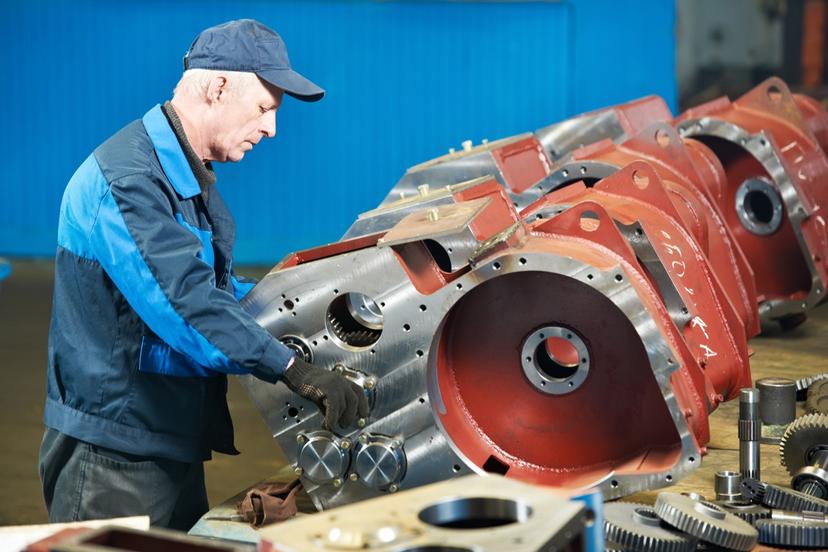Manufacturing

Industry Outlook
Despite signs of gradual improvements in this industry, manufacturing jobs continue to decline as factories relocate to foreign countries with lower labor and material costs. As a result, labor unions have lost some of their strength to negotiate for better contracts and wages for manufacturing workers. Automation has also contributed to the continuing decrease in factory jobs. In continued efforts to cut labor costs and increase efficiency and productivity, manufacturers are replacing much of their labor force with robotics-based machinery. To remain competitive in global markets, many companies are striving to become even more automated, which will in turn eliminate even more jobs. While many assembly line jobs will disappear, the demand for engineers, who program, install, and maintain the automated machinery, should be strong.
Economists remain optimistic about the U.S. manufacturing industry, however, regardless of declines in this sector. According to the National Association of Manufacturers, U.S. manufacturers perform 63 percent of private sector research and development, driving more innovation than any other sector. Of the 4.6 million manufacturing jobs that were expected to become available between 2018 and 2028, an estimated 1.96 million would be new jobs created by natural growth, according to a 2018 report from Deloitte and The Manufacturers Institute, which noted that industry job openings had been experiencing double-digit growth since mid-2017.
The coronavirus pandemic, which began in Wuhan, China, in late 2019, had a tremendous impact on the U.S. manufacturing industry in 2020. Due to the business shutdowns early on in the pandemic, U.S. industrial production and factory orders experienced steep decline in April 2020, which was followed by little improvement. According to a Deloitte report, as of December 2020, the U.S. industrial production index stood at 105.7, which was a big drop from its pre-pandemic 110 level. Production and order levels were also still below 2019 levels by the end of 2020, but the decline has slowed. Employment levels in manufacturing had also dropped in 2020, with the lowest employment levels in April 2020 since 2010. Deloitte projects annual manufacturing growth levels for gross domestic product from 2020 through 2021 to be at a rate of 3.5 percent. The economy is expected to rebound due to the rollout of COVID-19 vaccine in 2021, which will contribute to growth in the manufacturing industry. The Institute for Supply Management forecasts a nearly 7 percent increase in revenue for U.S. manufacturers, with the majority of industry sectors, including computer and electronics products, having increases.
However, Deloitte and The Manufacturers Institute also predicted a challenging environment in the years ahead. The key to remaining competitive in manufacturing will be innovation and access to talented workers. The ideal employee will need to be able to balance both hardware and software. More than half (2.4 million) of the open positions in 2028 could potentially go unfilled because of a widening skills gap. In 2018, an unprecedented 89 percent of global manufacturing executives agreed that a talent shortage existed in the United States' manufacturing sector. This was a 5 percent increase from 2015.
"The search for skilled talent—ranked as the No. 1 driver of manufacturing competitiveness by global manufacturing executives—appears to be at a critical level," Deloitte and The Manufacturers Institute noted. As manufacturing continues to be impacted by new advanced technologies, the need for workers with related skills appears to be more pressing than ever before.
